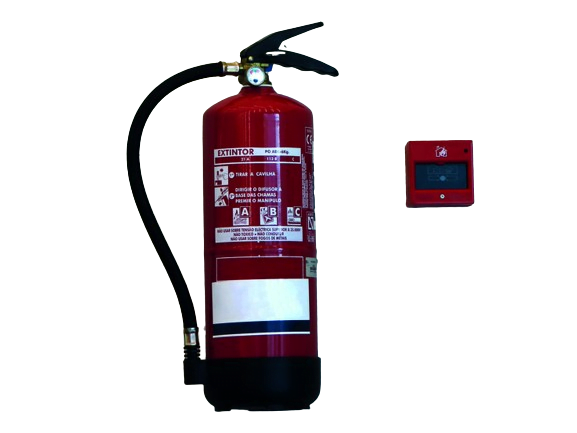Safety is crucial in any industrial setting, and a biodiesel plant is no exception. A manufacturing unit needs to ensure biodiesel safety for employees and equipment. There are different aspects of these protocols we need to understand and clarify for a safe future
Let us briefly explore these vital safety protocols for a biodiesel plant.
Table of Contents
ToggleBiodiesel Safety from Chemical Hazards
Ensuring the biodiesel safety of workers in biodiesel production is paramount due to the presence of various chemical hazards. From methanol and acids to alkalis and organic oils, each substance poses potential risks that demand meticulous safety protocols.
Chemical Hazards Overview :
Methanol stands out as a primary concern in biodiesel plants. This alcohol, vital for the transesterification process, is highly flammable and poses severe health risks upon inhalation or skin contact. Adequate ventilation and strict adherence to handling procedures are imperative to mitigate its dangers.
Acids and Alkalis like sulfuric and hydrochloric acids, as well as sodium hydroxide and potassium hydroxide, are indispensable catalysts in biodiesel synthesis. Despite their crucial role, these chemicals can cause severe burns and eye damage upon contact. Workers must wear appropriate personal protective equipment (PPE) such as goggles, gloves, and aprons, and be trained in their safe handling and neutralization procedures.
Organic Oils, including feedstock oils and glycerol, are prevalent in biodiesel processing. While less immediately hazardous than chemicals like methanol, they can still pose risks of slip hazards and environmental contamination if not properly contained and managed.
Here is the list of safety protocols to follow.
Safety Protocols:
1. Material Safety Data Sheets (MSDS)
These documents provide crucial information on chemical composition, hazards, handling procedures, and emergency responses. Accessible MSDSs for all chemicals used are mandatory for informed risk management.
2. Chemical Management and Safety Rules (CMSR)
Implementing a comprehensive CMSR plan outlines protocols for safe handling, storage, and disposal of hazardous chemicals. Regular training following the CMSR protocols ensures all personnel understand and stick to these protocols.
3. Emergency Planning and Community Right to Know Act (EPCRA)

Compliance with EPCRA mandates reporting on chemical inventories, releases, and emergency response plans, fostering transparency and readiness in case of accidents.
4. Fire Safety Measures
Biodiesel production areas must be equipped with fire extinguishers rated for flammable liquids, with employees trained in their use. Additionally, maintaining clear evacuation routes and conducting regular fire drills are essential for preparedness.
5. Personal Protective Equipment (PPE)
Proper attire, including chemical-resistant gloves, goggles, and aprons, shields workers from chemical splashes and fumes. Respiratory protection may also be necessary in areas with poor ventilation or high methanol concentrations.
6.Storage and Handling
Segregating chemicals based on compatibility and ensuring secure storage containers minimizes the risk of spills or reactions. Labels indicating contents, hazards, and handling instructions should be clear and visible.
7. Incident Awareness and Training
Learning from past incidents underscores the importance of experience and rigorous training. Operators must be proficient in recognizing potential hazards and responding swiftly and effectively to mitigate risks.
Equipment Usage and Maintenance for Biodiesel Safety :
Proper equipment usage and maintenance ensure biodiesel safety for employees. These measures will assist in creating a safe environment for operators to work in a biodiesel plant.

- Equipment Usage
Proper operation of equipment such as reactors, centrifuges, and storage tanks is vital for smooth biodiesel production.
Operators must adhere strictly to manufacturer guidelines and operational protocols to prevent malfunctions and accidents.
- Maintenance Practices
Regular maintenance schedules, including inspections and component replacements, are essential to sustain equipment performance and longevity. This proactive approach minimizes downtime and reduces the risk of mechanical failures that could compromise safety.
- Training and Preparedness
Continuous training ensures that personnel are proficient in equipment operation, maintenance procedures, and safety protocols. This preparedness is crucial for swift and effective response to potential incidents, fostering a culture of safety and responsibility among employees.
- Lockout Procedures
Clear and stringent lockout procedures are established to safeguard workers during maintenance or repair activities. These procedures ensure that energy sources are isolated and machinery remains safely inoperative. It prevents any accidental startups that could lead to injuries.
- Emergency Shutdown Systems
Strategically placing emergency shutdown buttons throughout the plant allows for immediate response to unforeseen emergencies. These systems are designed to swiftly halt operations in hazardous situations. Such systems minimize risks and protect personnel, equipment, and the environment.
Environmental Safety Measures in Biodiesel Production
Environmental safety, for the manufacturing unit and ecosystem, should be a pillar of a responsible biodiesel production unit. It must cover rigorous measures to mitigate impacts and ensure biodiesel safety for employees and surroundings.
1. Chemical Handling and Disposal
Stringent protocols govern the handling, storage, and disposal of chemicals used in biodiesel production. Employees are trained to minimize spills and leaks and to promptly contain and clean up any incidents to prevent environmental contamination.
2. Regulatory Compliance
Adherence to environmental regulations is paramount. Biodiesel facilities must comply with standards set by agencies like the Environmental Protection Agency (EPA). It ensures emissions, wastewater discharge, and waste management practices meet or exceed legal requirements.
3. Resource Efficiency
Efforts should be made to optimize resource use. This includes recycling water used in production processes to minimize energy consumption through efficient equipment operation.
4. Environmental Monitoring
Regular monitoring of air, water, and soil quality is conducted to detect any potential environmental impacts. Monitoring data informs proactive measures to address issues promptly and maintain compliance with environmental standards.
Final Words: Biodiesel Safety for Employees must be the Prime Concern
Implementing such measures will ensure biodiesel safety throughout a production unit. Employees will learn how to handle hazardous chemicals and ensure a proficient biodiesel production process. Proper training related to safety measures will educate operators and assist the management in sticking to the latest industry guidelines.
MagTech: The Best Assistance for Ensuring Biodiesel Safety for Employees
We, at MagTech, use our over a decade of experience to ensure biodiesel safety for employees. We find out the latest measures followed worldwide to create safe biodiesel production for operators. Let us be your guide to setting up a biodiesel plant by implementing industry-standard safety protocols for a safer future.



